AUD/CAD is one of the popular crosses, especially among traders who focus on the impact of commodities on forex pairs. The volatility of the pair can be quite confusing to some traders, but with careful research and a keen eye for fundamental data, it’s possible to build a winning trading strategy.
To trade AUD/CAD:
- Educate yourself on how the pair works
- Research forex brokerages and choose one
- Open an account with the broker and choose a platform to trade forex
- Analyze AUD/CAD and build a strategy for trading
- Open your position
- Watch your profit or loss then close the trade
AUD/CAD provides a decent amount of liquidity. Also, the availability of economic and political data that could influence AUD/CAD makes the pair attractive to traders. AUD/CAD can give you an edge in the forex market, but it’s important to understand its fundamentals before jumping into trading.
Table of Contents
Currency Pair Chart and Profile
AUD/CAD is the abbreviation for the currency pair consisting of the Australian dollar and the Canadian dollar. The value of AUD/CAD shows the number of Canadian dollars required to purchase one Australian dollar. The AUD/CAD pair is also called Aussie Loonie.
The economies behind AUD/CAD
The AUD/CAD pair is interesting because the economies behind both AUD and CAD are highly dependent on commodity exports. Canada’s main exports include crude oil, wood, and grains. Australia mainly exports minerals (particularly iron ore and gold) and meat.
In terms of GDP, Canada is the 10th-largest economy in the world and Australia comes in at number 14. The monetary policies for the Canadian and Australian economies are set by Canada and Australia’s central banks – the Bank of Canada and the Reserve Bank of Australia, respectively.
It’s interesting to note that Australia and Canada’s economic activity shifts in opposite seasons and the two countries do relatively little trade with each other.
What influences AUD/CAD movement?
One key element of successful forex trading is understanding the factors that can influence the pair’s movement. Some of the factors that will probably move AUD/CAD include:
Commodity prices
Since both the Australian dollar and the Canadian dollar are affected by commodity prices, AUD/CAD is greatly impacted by commodity prices. However, since there are differences in Australia and Canada’s export base, there is often a significant divergence between the basis of commodity price movements.
Note: Natural disasters that impact the production or availability of commodities can also influence AUD/CAD movement.
Relationships with big trade partners
Economic factors that affect Canada or Australia’s major trade partners can cause AUD/CAD to fluctuate. For instance, Canada has close ties with the U.S and the Canadian dollar can be moved by U.S. data.
On the other hand, China is responsible for a substantial amount of Australia’s exports and so economic or political data from China can influence AUD/CAD movement. Besides China, the Australian dollar has, in the past, been influenced by commodity demand in India and to a lesser extent, Japan.
Economic drivers of both the Australian and Canadian economies
The economic performance of both Australia and Canada can impact AUD/CAD prices. Notable economic data to be on the lookout for when trading the pair includes inflation, industrial production, trade balances, retail sales, GDP, employment, and interest rates.
It’s important to keep track of any scheduled central bank meeting. Any announcements made by either the Bank of Canada or the Reserve Bank of Australia can cause volatility in the market. You can also expect to see AUD/CAD movement as a result of day-to-day news flow, elections and changes in government policy, and economic stability outlook.
Is AUD/CAD an exotic pair?
AUD/CAD doesn’t belong to the exotic currency pair group; it’s a minor pair and one of the Aussie crosses. A cross occurs when a currency pair is made up of two major currencies, but neither of those currencies is the USD.
Advantages of trading AUD/CAD
AUD/CAD can provide more trading opportunities, especially when you look at the pair’s liquidity and volatility. Instead of just looking at the major currency pairs, AUD/CAD offers more trading options since the pair will likely exhibit different price movements compared to pairs based on the U.S. dollar.
Besides the trading opportunities, the AUD/CAD cross will likely form trends. The economic performance of the U.S. can keep U.S. dollar-based currency pairs from forming smooth movements. In fact, major pairs are often susceptible to numerous spikes in the charts, even when trends are emerging. This can make range spotting or trend spotting more difficult.
Disadvantages of trading AUD/CAD
Even though AUD/CAD provides relatively good liquidity, it’s a cross pair, and cross pairs tend to be less liquid than the major pairs. Consequently, they typically come with wider spreads. This can have a significant negative impact on day traders who rely on low spreads to make worthwhile profits.
The Best Time to Trade AUD/CAD
In theory, you can trade forex 24/7. However, the Australian dollar sees the most fluctuation during the Sydney and Tokyo sessions while the Canadian dollar is most volatile during the New York session. You can expect the greatest AUD/CAD liquidity and volatility between 7 pm and 4.30 am GMT. These times allow you to trade all the sessions in which both the Australian and Canadian dollars see significant movement.
Best Strategies for Trading AUD/CAD
Trend trading
The trend trading strategy is a favorite among novice forex traders since markets tend to move in line with overriding trends most of the time. The strategy involves looking for trading opportunities in the direction of a currency pair’s general trend.
For instance, you can identify an uptrend using higher highs and higher lows. A downtrend, on the other hand, will comprise lower highs and lows.
You can also use the swing highs and lows to identify your market entry point. In an uptrend, you could buy at the higher low, and in a downtrend, you could sell at the lower high.
As with other trading strategies, it’s important to have a stop order to minimize your risk. During an uptrend, a stop-loss is often placed just below a swing low that occurred before entry. Conversely, for a downtrend, a stop-loss is usually placed just above a prior swing high.
Swing trading
The swing trading strategy involves holding a position for more than a day in an effort to capitalize on a market’s swings. With AUD/CAD, you can trade using two types of swing trading techniques – range trading and breakout swing trading.
Range trading
In forex, a trading range occurs when a currency pair trades between consistent high and low prices for a certain period.
When range trading AUD/CAD, you could go long as the price reaches the range support, or you could go short when it reaches the range resistance. All this is done with the supposition that the price will continue moving within the range.
However, sometimes the price breaks through and moves below the support or above the resistance. When this happens you can use a breakout trading strategy.
Breakout swing trading
From the chart, you can see the breakout as the price strongly rejects the range resistance. The general rule for entering breakout trades is going short once it looks like the price will close below the range support or going long once the price looks like it will close above the range resistance.
Before you trade breakouts, it’s important to have an exit strategy that establishes three exits plans:
- Where to exit a profitable trade
- Where to exit a losing trade
- Where to set up your stop-loss order
Canada and the U.S. are each other’s neighbors and big trading partners. The Canadian economy is tied to that of the U.S and so the AUD/CAD pair tends to show a strong correlation to the AUD/USD pair.
In the same way, the Australian economy is closely related to that of New Zealand. Besides a similar geographical location, both countries rely heavily on commodity exports and they have similar major trade partners. As a result, AUD/CAD usually exhibits a strong relationship with NZD/CAD.
The relationships between USD and CAD, and AUD and NZD, means that AUD/CAD also tends to move in a similar direction to NZD/USD.
Correlation of AUD/CAD with other commodities and instruments
Australia is a top gold producer. This has fostered a strong historical relationship between AUD and gold prices. On the flip side, CAD is closely linked to the U.S. economy. As such, AUD/CAD normally moves in the same direction as XAU/USD.
Related Questions
Is the Canadian dollar stronger than the U.S. dollar?
One way to judge the Canadian dollar’s strength is by analyzing its value in comparison to the U.S. dollar over a long time frame. The Canadian dollar’s value is determined by economic factors such as the demand and supply for the currency and the currency’s resilience against inflation.
What are commodity currency pairs?
Commodity currency pairs are those forex pairs from countries with large commodity reserves. These pairs correlate strongly with commodity prices.
In addition to the Australian and Canadian dollars, other commodity currencies in the forex market include the New Zealand dollar, South African rand, Russian ruble, Norwegian krone, Brazilian real, and the Chilean peso.

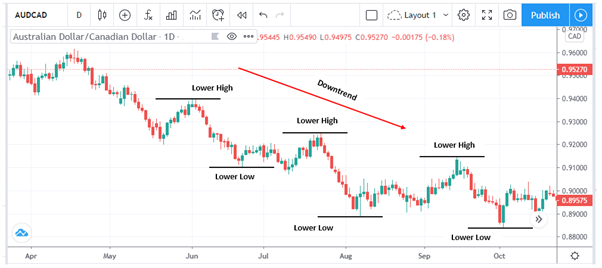
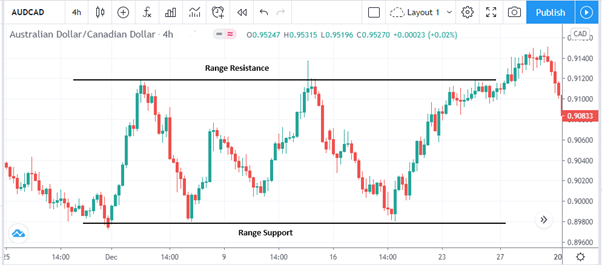
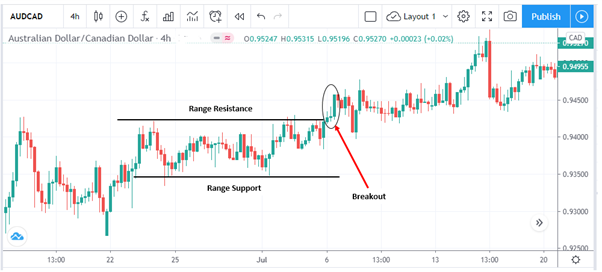
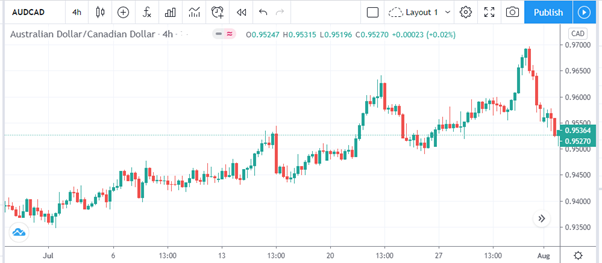
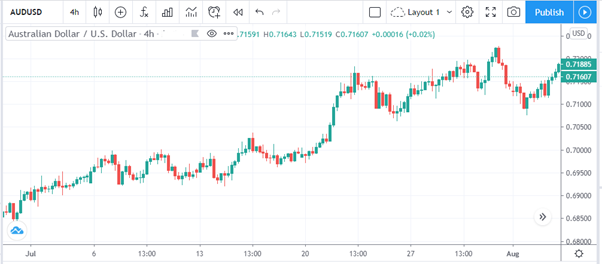
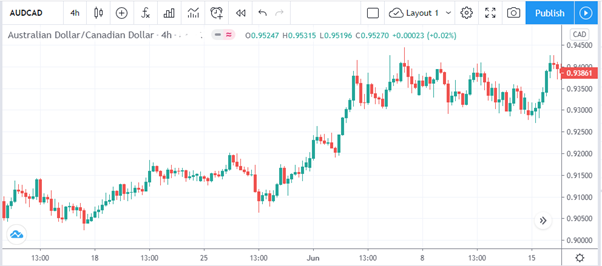
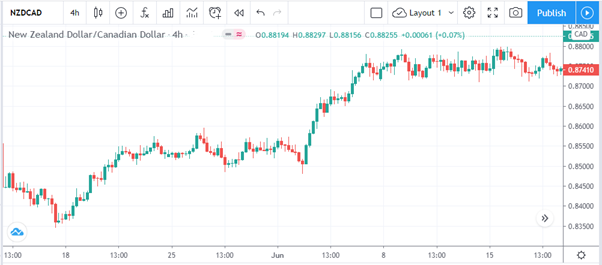
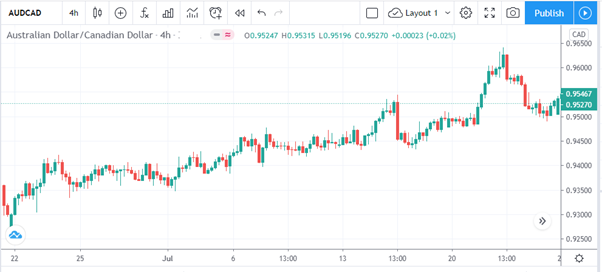
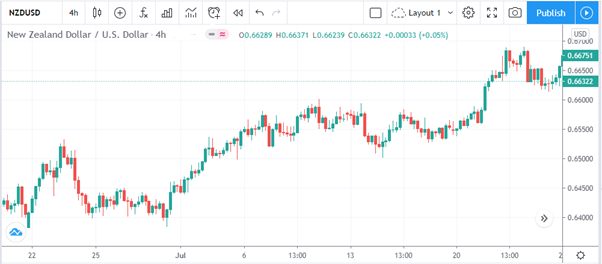
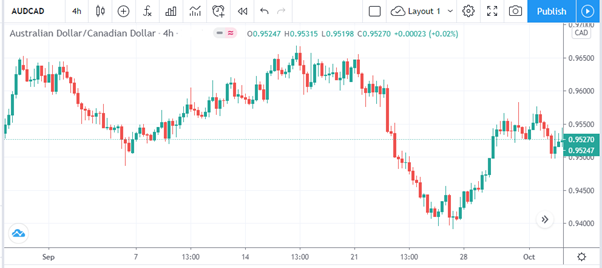
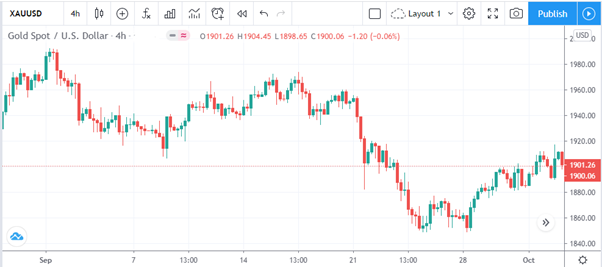






Leave a Reply